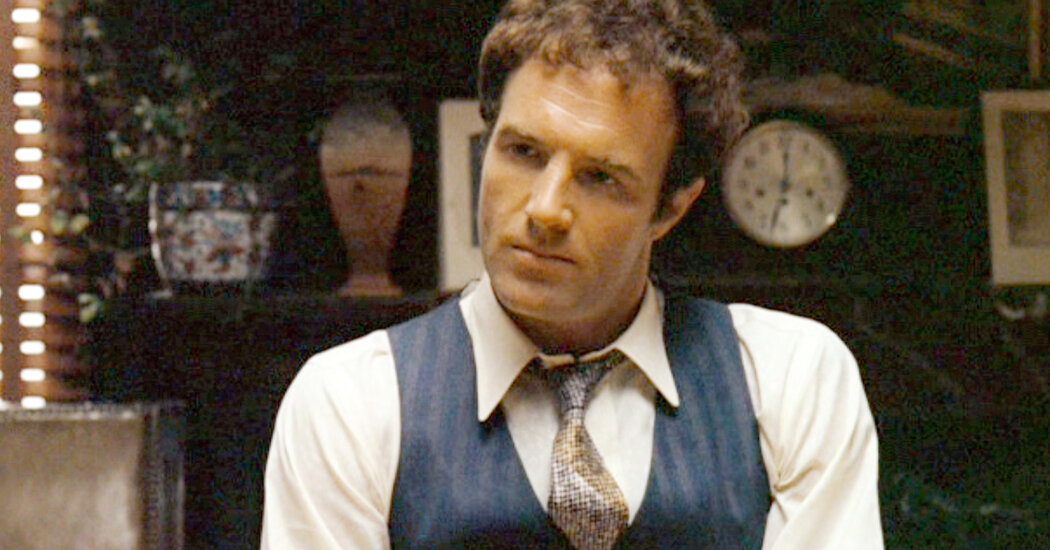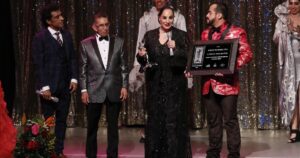James Caan, who built a durable film career in varied roles across six decades but was forever identified most closely with one of his earliest characters, the quick-tempered, skirt-chasing Sonny Corleone in the original “Godfather” movie, died on Wednesday. He was 82.
His death was announced by his family on Twitter and confirmed by his manager, Matt DelPiano. Both his family and his manager declined to say where he died or cite a cause.
By the time “The Godfather” was released in 1972, Mr. Caan had established himself as a young actor worth keeping an eye on. He had a meaty role in “El Dorado,” a 1966 western that starred John Wayne and Robert Mitchum. (Wayne, Mr. Caan said, cheated at chess games during breaks in the filming.)
In “The Rain People,” a 1969 movie that was his first collaboration with the director Francis Ford Coppola, he earned critical praise playing a simple-minded former football player.
“Brian’s Song” (1971), an early made-for-television movie, brought him to the attention of a wider audience. Based on a true story, it focused on the friendship between a Black football star, Gale Sayers of the Chicago Bears (played by Billy Dee Williams), and a white teammate, Brian Piccolo. Piccolo died of cancer in 1970 at 26, and Mr. Caan played him with verve and humor in an unabashedly three-hanky film.
Then came Mr. Coppola’s “Godfather.” Initially cast as the central figure, Michael Corleone — the role ultimately played by Al Pacino — Mr. Caan ended up playing Sonny, quick to anger and ultimately gunned down on a causeway. He threw himself into the role so fully that for years, he said, strangers would say things to him like “Hey, don’t go through that tollbooth again.”
Some even mistook him for a real mobster. “I’ve been accused so many times,” he told Vanity Fair in 2004. “I won ‘Italian of the Year’ twice in New York, and I’m not Italian.”
He was in fact Jewish, reared in Sunnyside, Queens, by German-born parents. “I was denied in a country club once,” he said. “Oh, yeah, the guy sat in front of the board and he says, ‘No, no, he’s a wiseguy, been downtown. He’s a made guy.’ I thought, ‘What, are you out of your mind?’ ”
Mr. Caan received an Emmy nomination for best actor for “Brian’s Song” and an Academy Award nomination for best supporting actor for “The Godfather.” His Oscar competition included Mr. Pacino and another “Godfather” actor, Robert Duvall. The three canceled one another out, and the award went to Joel Grey for “Cabaret.”
By then, Mr. Caan’s career had kicked into high gear. The decade that followed was especially fertile. Among his roles were a love-struck sailor in “Cinderella Liberty” (1973), a self-destructive professor in “The Gambler” (1974), an anti-authority athlete in “Rollerball” (1975), a fierce World War II sergeant in “A Bridge Too Far” (1977) and a not-too-bright ex-con in “Thief” (1981), a favorite movie of his.
Not all his films received favorable notices, but with his rugged good looks and obvious smarts, his acting usually did. Reviewing “Cinderella Liberty” for The New York Times, Vincent Canby wrote: “Mr. Caan seems to be shaping up as the Paul Newman of the nineteen-seventies. An intelligent, versatile actor with a low-key but unmistakable public personality.”
Like Paul Newman, Mr. Caan tried his hand at directing. But he did so only once, with “Hide in Plain Sight” (1980), in which he also acted, playing a man searching for his children after they and their mother are brought into the government’s witness-protection program. The film fared poorly at the box office and left him disenchanted.
“Everybody wants to do ‘Rocky 9’ and ‘Airport 96’ and ‘Jaws 7,’ ” he said in 1981. “And you look and you listen, and what little idealism you have left slowly dwindles.”
In his prime, Mr. Caan had a man’s-man reputation that he savored. In interviews, he strewed four-letter words like birdseed. He earned a sixth-degree black belt in karate. He roped steers on the rodeo circuit and managed a boxer — pursuits, especially rodeo, that left him with so many stitches and screws in his shoulders and arms that the sportswriter Jim Murray once said, “Jimmy Caan was not born, he was embroidered.”
Mr. Caan also had a bad-boy reputation. He was married and divorced four times. He appeared as a character witness for an old friend from Queens who was on trial as a mobster because, he said, stand-up guys stay loyal to their pals. And he had his own brushes with the law.
The police questioned him at length in 1993 after a man fell to his death from the fire escape of a Los Angeles apartment where Mr. Caan was staying. The authorities concluded that the death was accidental, and Mr. Caan said he was asleep when it occurred.
The next year the North Hollywood police arrested him after he flashed a loaded pistol in public. He said he had done it only to break up a fight. The charges were dropped.
Along the way, he checked into a rehab center for an addiction to cocaine that began after his sister, Barbara Licker, died of leukemia in 1981. The two of them had been close — she was president of a movie production company that included James and their brother, Ronald — and her death hit him hard.
He barely worked for the next six years and wound up deep in debt. “I got into the whole lifestyle of girls and drugs and partying,” he told Entertainment Weekly, adding that “you really do get caught up in it, and it’s very destructive.”
But he bounced back, starting in 1987 with the Vietnam War drama “Gardens of Stone,” another collaboration with Mr. Coppola, in which he played a tough sergeant. He then took on roles including a writer held captive by a crazed fan (played by Kathy Bates) in the box-office hit “Misery” (1990), directed by Rob Reiner and based on a novel by Stephen King; a tough but romantic mob guy in “Honeymoon in Vegas” (1992); yet another mobster in the comedy “Mickey Blue Eyes” (1999); and a cantankerous book editor in “Elf” (2003).
He also turned to television, notably the series “Las Vegas,” on which he was seen from 2003 to 2007 as the president of operations and security chief for a casino. Still, though he worked steadily, his later career lacked the incandescence of his earlier years.
Born on March 26, 1940, in the Bronx, James Edmund Caan grew up in Queens, the son of Arthur Caan, a wholesale dealer of kosher meat, and Sophie (Falkenstein) Caan, a homemaker.
Street life held his interest more than classrooms did. He dropped out of several schools before settling down at Rhodes Preparatory School in Manhattan, where he graduated in 1956 at age 16.
At Michigan State University, he hoped to make the football team but failed. He switched to Hofstra University on Long Island — Mr. Coppola was a classmate — but dropped out before long. Nonetheless, his interest in acting was kindled there. He went on to study for five years at the well-regarded Neighborhood Playhouse School of the Theater in Manhattan.
At around that time he met an actress named Dee Jay Mathis, who became the first of his four wives (the lengths of his marriages ranged from 12 years to barely a year). He is survived by his brother, Ronald; five children, the actor Scott Caan and Tara, Alexander, James and Jacob Caan; and four grandchildren.
Mr. Caan’s early work included roles in 1960s television series like “Route 66,” “Dr. Kildare” and “Wagon Train.” Movies soon loomed, with “The Godfather” dominant.
In that film, he said, he had improvised some of his lines and actions, including two words that he did not invent but that he ushered into the vernacular.
Sonny tells Michael how hard it will be to kill the family’s enemies: “You gotta get up like this and — bada bing! — you blow their brains all over your nice Ivy League suit.”
“Bada bing? Bada boom? I said that, didn’t I?” Mr. Caan said in an interview with Vanity Fair. “Or did I just say bada bing? It just came out of my mouth. I don’t know from where.”



